
Are you applying to the No Waste Challenge in NAIROBI?
In this brief summary, we dive deeper into local perspectives around waste, and highlight the specific challenges and opportunities facing this region.
Keep reading to learn more about submitting a project to the NAIROBI city track.
BEFORE YOU APPLY WE RECOMMEND YOU FIRST READ:
NAIROBI NOMINEES
NAIROBI BRIEF
Introduction
A GROWING PUBLIC MENACE
Nairobi’s streets are awash with litter. With some 4 million inhabitants, Kenya’s capital produces around 2,400 tonnes of solid waste a day. Notably, only 45%the waste generated in Nairobi undergoes any sort of recovery or treatment process. Most of it ends up in open dumps, or burned.
In the east of the city lies Dandora, one of Africa’s largest rubbish dumps. Every day, 2,000 tonnes of waste pours in from the capital, including domestic, industrial, hospital and agricultural waste. The 12-hectare site also hosts an informal recycling economy which feeds nearly 3,000 families in surrounding slums. Here, poorly managed waste pollutes the air, water and soil, causing significant health and environmental problems.
Much about this situation can be attributed to the lack of efficient municipal waste management. Little segregation goes on, and there are hardly any incentives for people to sort or recycle their waste.
Although Nairobi’s problems are overwhelming, things are also changing for the better. In 2017 Kenya imposed the world’s strictest ban on the use, manufacturing and import of plastic bags. Unfortunately, challenges remain in enforcing the ban, especially under pressure of the COVID-19 pandemic.

A MATTER OF ACCESS
More than half of Nairobi’s 4 million inhabitants live in slums. This means that inequality is a major challenge in the capital. Not everyone has access to the same levels of infrastructure or public services. At the moment, licensed private operators coordinate waste collection and transportation in well-off and middle-income residential areas at a recurring monthly fee. In low-income residential areas and informal settlements, waste collection is done by community-based organizations—if it is done at all.
The result is, proper waste management seems to be a luxury and only available for those that can pay for it. In this light, the realization of a circular economy in Kenya seems to be far out of reach in the short term. However, there are considerable opportunities to be found in recycling and composting. Around 50% of the waste generated in Nairobi is organic, while only 15% of all plastic waste is recycled.
On the other side of the spectrum, changing consumption patterns due to economic growth is leading to an increase in (take, make,) waste. Meanwhile, lack of awareness and knowledge among the general public has led to poor waste practices. To avoid ecological disaster in the long run, further development towards more welfare must be coupled with education and a culturally and ethically sensitive approach to sustainable living.
REVIVING LOCAL PRODUCTION
The bulk of the production that happens in Kenya takes place in the agricultural sector. For almost all other products, Kenya relies on imports from abroad, mostly from China. This path sees Kenya hurtling towards being a consumer nation. To stimulate the domestic economy, and develop a market for locally produced goods, new policies have been presented in recent years. In 2018 the government launched the Big 4 Agenda, with the goal to increase the manufacturing sector’s contribution to Kenya’s Gross Domestic Product from 9.2% to 15% by 2022.
One thing we can learn from local production is a more circular way of making, crafting and reusing resources. Many Kenyan traditions are sustainable without it being labelled as such. For example, the “Jua Kali” sector in Nairobi is an entire industry comprising small scale traders and artisans who work on the roadside, renowned for their ability to fix almost anything on demand. The creativity of these street entrepreneurs is sometimes mind boggling, and they represent a giant informal sector of expertise in Kenya.
Unfortunately, behaviours in cities are changing. Old practices are being replaced by a shiny new throwaway culture. How can we inspire new narratives about local products and techniques that champion sustainability as well as prosperity?
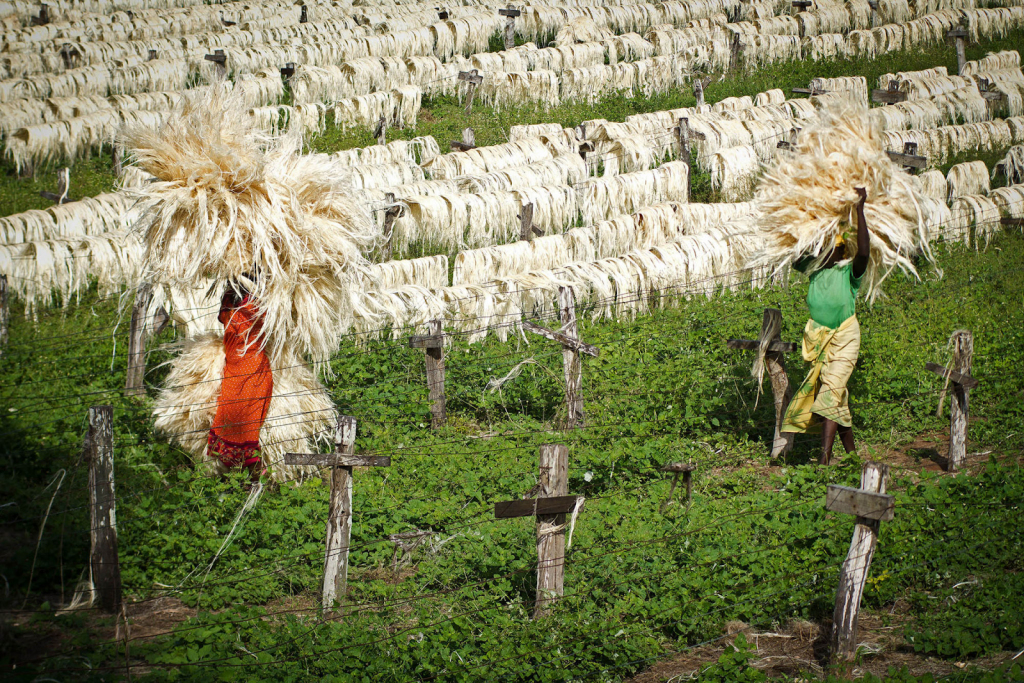
INSIGHTS ON WASTE IN NAIROBI

FOOD LOSS
In Kenya the agriculture and food sector is the biggest contributor to the country’s greenhouse gases. About 30% of the food generated is lost during harvesting and transporting. Food loss typically takes place at the production, storage, processing and distribution stages in the food value chain, while food waste refers to food, which is of good quality and fit for consumption, but is not consumed because it is discarded either before or after it is left to spoil.
Innovators and start-ups are trying to turn the tide with smart solutions such as Twiga Foods, using technology to streamline the food supply chain from harvest to market.

GROWING E-WASTE
E-waste has ballooned in Nairobi in the past decade due to the rising use of mobile phones. The majority of e-waste is recycled informally in Kenya. Collectors separate plastic, motherboards, batteries and copper wire to be sold, and then burn the excess. This kind of informal processing damages workers’ health, according to the World Health Organization.
Only a few companies in Kenya have a sustainable programme to handle e-waste. WEEE Centre processed approximately 200 tonnes of waste in 2016, which is about 1% of Kenya’s total e-waste production. Boniface Mbithi, general manager of the centre, says the proliferation of e-waste in the country is a ‘crisis’.

SISAL INDUSTRY
Sisal is a fibre crop that grows in the tropics. In Kenya sisal is the sixth most important cash crop coming after tea, coffee, sugar, pyrethrum and cotton.
Unfortunately, the invention of cheaper synthetic fibers in the 1940’s dealt a major blow to Kenya’s sisal industry. Luckily, thanks to renewed interest in natural, eco-friendly fibers in recent years, the demand for sisal products is rapidly increasing. It has a wide variety of uses: it can be processed into fibre, twined into rope and woven into carpets. It is also useful as alternative to plastic packaging and bags.
WHAT CAN DESIGN DO FOR NAIROBI?
SO WHERE CAN DESIGNERS MAKE A DIFFERENCE? WITH THE HELP OF OUR PARTNERS, WE’VE HIGHLIGHTED SOME KEY OPPORTUNITIES AND CASE STUDIES RELEVANT FOR NAIROBI, BUT THERE ARE PLENTY MORE! REFER TO THE GLOBAL BRIEFS FOR FURTHER INSPIRATION.
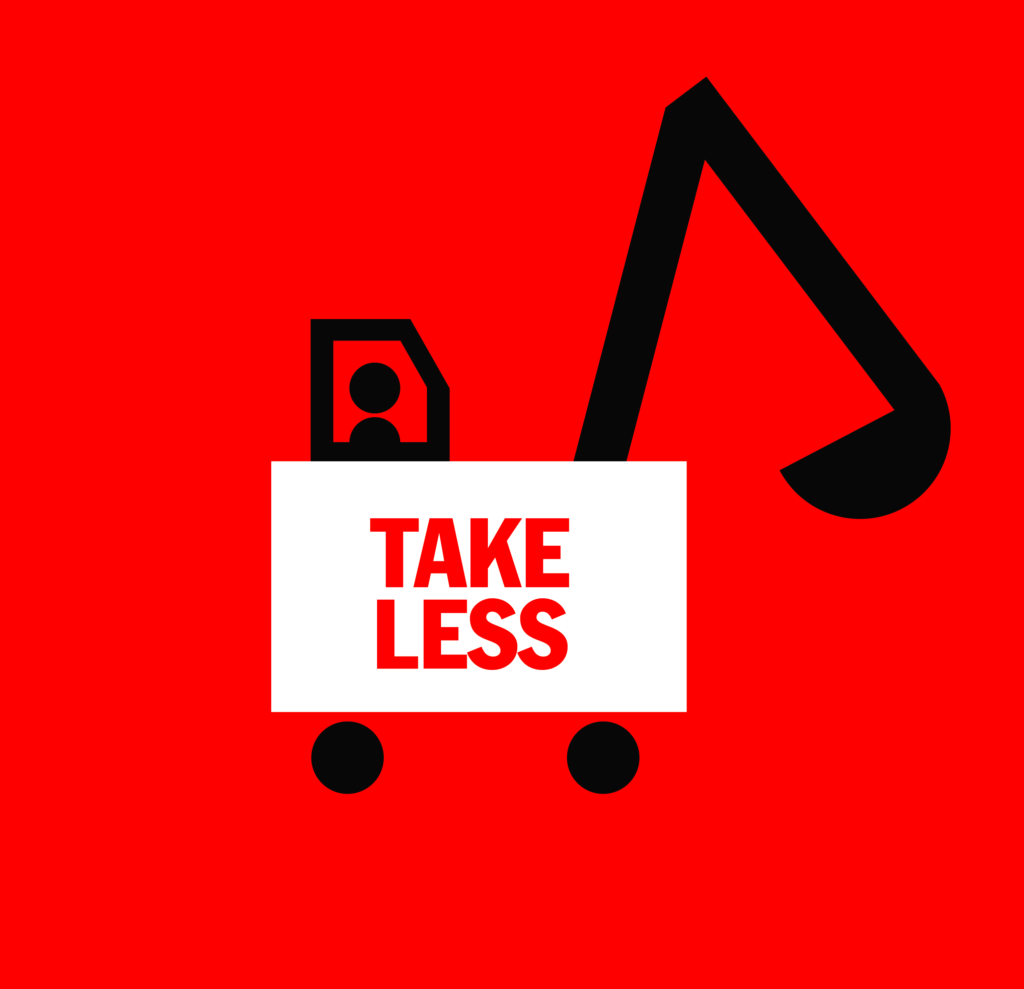
OPPORTUNITIES FOR DESIGN
This design brief asks: how can we use fewer natural resources and consume more mindfully? Take Nairobi’s needs into account by considering the following opportunities.
- Shifting mindsets: With economic growth comes increased consumption and waste. How can we tap into Kenyans’ resourcefulness and frugality to promote a sustainable lifestyle amongst members of a growing middle class?
- Food waste: Especially at the post-harvest handling of crops, a lot of food is wasted. How can we design products and services to reduce food waste in the production, storage, processing and distribution stages?
- Plastic waste: Kenya successfully banned the use of plastic bags, but other disposable plastics remain a big problem. How can we design (education) programmes to reduce the demand for single-use plastics and address the persistent throw-away culture?
get inspired
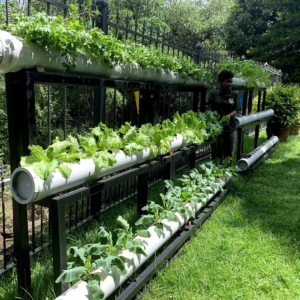
UKULIMA TECH
With vertical urban gardens in Nairobi Ukulima Tech skips the long supply chain of typical fresh produce. Setting up gardens all over the city and sharing their knowledge about vertical food systems, Ukulima Tech enables citizens and communities to grow and harvest their own food at home. Ukulima Tech was one of the winners of the What Design Can Do Clean Energy Challenge.
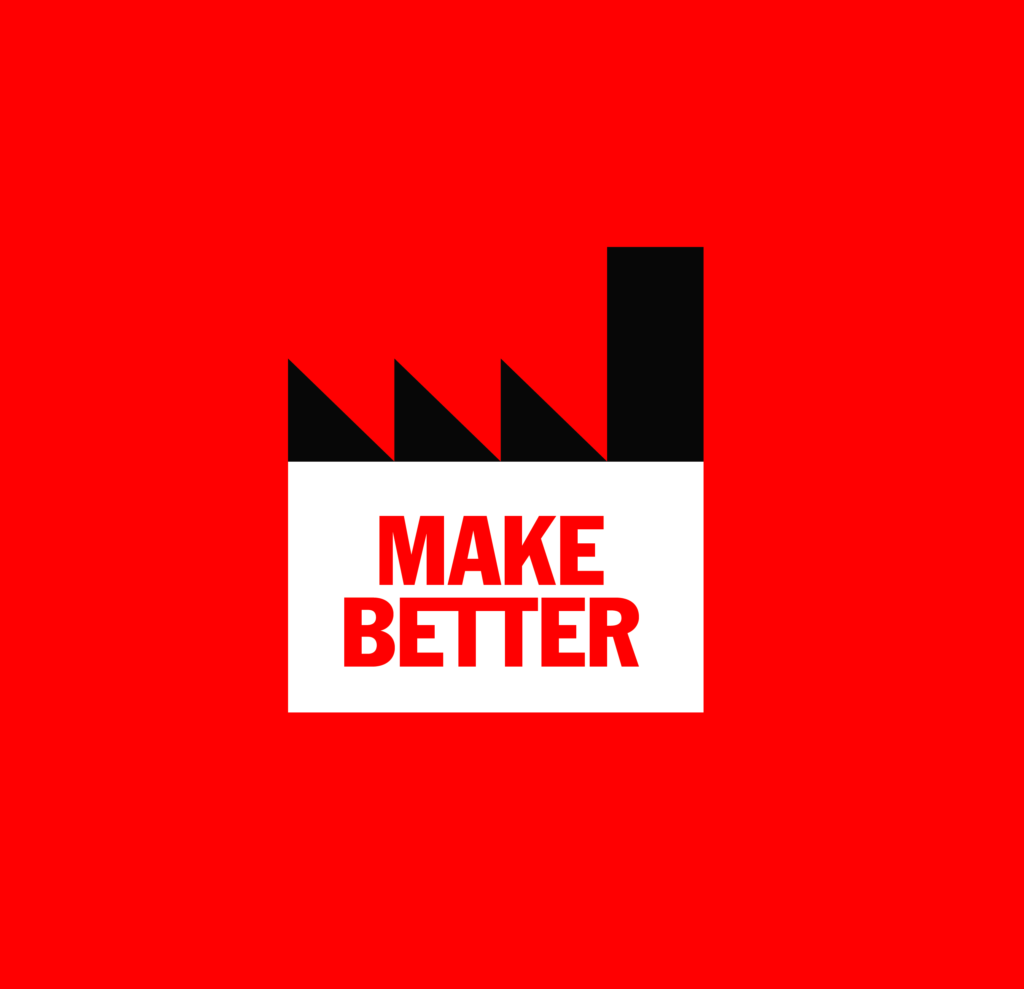
OPPORTUNITIES FOR DESIGN
This design brief asks: how can we make products and materials that are kept in use or regenerate natural systems? Take Nairobi’s needs into account by considering the following opportunities.
- Crafts & homemade products: Traditional crafts such as sisal baskets and bags, but also selling homemade food, drinks and detergent are sustainable practices by nature. How might we build on these practices to grow a more sustainable production sector?
- Alternatives for PET bottles: Many Kenyans don’t have access to fresh water and buy plastic PET bottles which then end up in the streets, rivers and oceans. How can we design sustainable systems for refilling water that are attractive for businesses and affordable for consumers?
- Sustainable fashion: Kenya has the potential to become a regional hub for sustainable fashion. How can the Kenyan textile sector lead the way in the circular economy? How do we reconcile the livelihood of local tailors with second-hand clothes sellers? How can we preserve cultural practices and stimulate material innovation?
get inspired

GJENGE MAKERS
The idea for Gjenge Makers came from the observation that Nairobi was generating more plastic waste than its recycling companies could uptake. To help combat the deluge, 29-year-old materials engineer Nzambi Matee launched a start-up which recycles bags, containers, and other discarded plastic into bricks that are cheap, colourful and even stronger than concrete.
So far, Gjenge Makers has recycled more than 20 tonnes of plastic and created 112 job opportunities in the community.
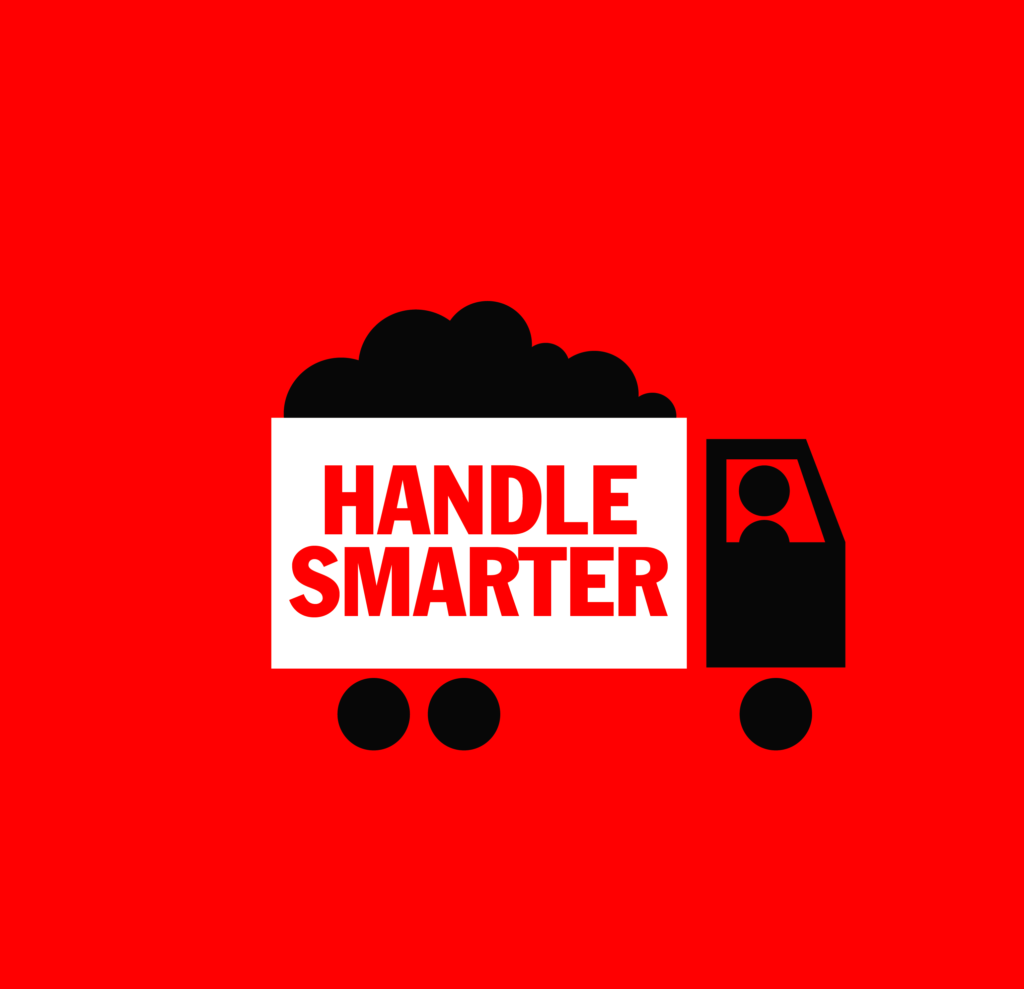
OPPORTUNITIES FOR DESIGN
This design brief asks: how can we use waste as a resource or dispose of goods more responsibly? Take Nairobi’s needs into account by considering the following opportunities.
- Community participation: Considering the poor infrastructure for waste management in Nairobi, community education and participation are essential. How can we raise awareness for responsible disposal and incentivise the separation and collection of waste?
- Economical perspective: How can we instill pride in the job of waste management so that the sector can professionalise and grow? What kind of services and facilities for sorting and recycling can we design on a neighbourhood and community level? How can these services improve public health?
- Organic waste & compost: The market for compost has enormous potential in Kenya. How can we design programmes, products and services to turn organic waste into compost for urban gardens and farms?
get inspired
TAKA TAKA
Taka Taka Solutions offers waste management services to all types of waste producers in Nairobi, from residential homes, to office buildings, restaurants, schools, shopping malls, factories and hospitals. They help their customers separate their waste at the source, and then process plastic containers and packaging into flakes and pellets at their own recycling plants.
They also compost organic waste into high quality organic fertilizer. This combination of in-house recycling and composting as well as working with external recycling partners enables them to recycle 95% of the waste they collect.
REFERENCES AND FURTHER RESEARCH
-
TO LEARN MORE, HERE ARE THE MAIN SOURCES USED FOR CREATING THIS BRIEFING
-
Jua Kali, Kenya’s informal sector fo ‘getting things done’
-
Dandora, Nairobi’s main dumping site
-
Kenya’s strict ban on plastic bags
-
Kenya’s food loss
-
Kenya’s potential to be regional hub for sustainable manufacturing and fashion
-
Big 4 action plan to strengthen local economy
-
Nairobi’s e-waste entrepreneurs
-
Sisal industry
-
Nairobi selection committee

Alex Kubasu is the Circular Economy Initiative Lead at WWF-Kenya. He is currently managing DANIDA Market Development Partnership: Waste to Value Project in Coastal Kenya. The project’s goal is to improve the plastic recycling value chain, to ensure plastic material remains in the economy and not wreak havoc in the environment. Alex is a trained Scientist, a Development Communication practitioner and a former journalist with Citizen TV.

Antony Kamakia, PhD is a Lecturer at the Kenya School of Government, whose mandate is Training, Research, Consultancy and Advisory services for the Government of Kenya. Antony is broadly studied in Environmental and Climate Change approaches and passionate about sustainable development of the planet. Antony is a Lead expert EIA (Reg. 8555) by NEMA of Kenya. Antony has over 10 years extensive experience in Environmental and Climate Change training and consultancy at KSG and beyond.

Bernice Nyoike founded and ran a briquette business to provide clean energy alternatives in Nairobi. This experience led her into the world of entrepreneur support where she has successfully designed and implemented programs across Africa. She has served at iHub, Village Capital, and the Merck Accelerator in Nairobi, and Innovation Village in Uganda. Bernice has a Bachelor’s degree in Project Management & Logistics, a Post-graduate Certificate in Social Innovation Management and a Certificate in Disruptive Strategy from Harvard Business School Online.

Faith Ngige is a Green and Circular Economy specialist with over 15 years’ experience in management training, consultancy, advocacy and formulation of green and circular economy policies. Currently she is the coordinator of the P4G Partnership for New Plastics Economy Project Kenya. Faith holds a Master’s in Business Administration (Strategic Management); Post graduate Diploma in Green and Circular Economy- Dynamics and Governance, Certification on Circular Economy and Agenda 2030; Policy Coherence for Sustainable Development from the United Nations System Staff College.

Julita Bhagat is an impact designer and problem solver, currently working as a design research lead at ARK Africa and occasionally consulting with international teams offering design thinking services. Her daily interactions living and growing up in Nairobi fuel her appetite for user centric design, as she observes and listens to her community solve their nuances. Julita is passionate about working on products and services that do good and have a lasting impact.

Karin Boomsma is the Director at Sustainable Inclusive Business. Karin perceives businesses as a force for good and circular economy as a key model for the new systems. Using creativity and innovation to turn climate change and circular economy concepts into relevant business strategies, communication, fruitful partnerships, networks, activities and positive impact. Boosting start-ups and grown-up businesses to rethink their DNA and redesign models into future proof ones is her key focus. With a background of Social and Cultural studies, her passion for behaviour and youth is big. She has lived and worked in Asia, Europe and Africa.

Kennedy Mugo works as a Business Analyst at KCIC. He works closely with clients to ensure that their businesses move from ideation to commercialization and supports them as they enter into the growth phase. He is passionate about entrepreneurship and startups development. Kennedy has acquired financial analytical skills over the years that have enabled him to provide effective business and financing advisory.

Lara Snatager develops the programmes for all events and challenges we put together at What Design Can Do. She studied theatre in Amsterdam, following which she became a producer for various cultural festivals and events – such as the Iranian Film Festival and Club Interbellum. Joining artists, journalists and activists alike, Lara’s search for ‘gesamtkunstwerken’ never ends. Lara is serving the Nairobi selection committee to represent What Design Can Do.

Mercy G. Kieni is a Water and Environmental engineer. She is a WASH expert and enthusiast having served in various rural communities in Kenya for the last 9 years to improve access to water and sanitation through infrastructure improvement, behavior change and policy influence.

Mugechi Ngandu is a budding project management professional with experience managing scaling portfolios in the information technology and services industry. She has successfully supported the data management and outsourcing needs of SMEs leveraging AI to power their innovations. She is currently supporting the next generation of entrepreneurs through CcHUB/iHUB incubation and acceleration programs both in Kenya and across Africa.

Mugure Njendu is a Mother, an Architect, an Urban Planner, a STEM Advocate and a Climate Action advocate in the Built Environment Space. She believes that change comes through innovative thinking that can impact behavioral changes in how we do things and that little actions can add up to global good. As a designer herself, she focuses on green building design and ensuring that her designs contribute to the reduction of carbon emissions.

Wekesa Zablon is a regional coordinator for the African Circular Economy Network (ACEN), and organiser for CEC Nairobi Chapter and Founded the UON Bikeshare program. He holds a Bachelors of Arts and Design degree from University of Nairobi (2011). Wekesa employs a variety of research methods to listen, understand, and evaluate in order to create actionable insights that improve products and processes for users. Wekesa is a designer in everything he does. He sees potential all around him. His strength lies in his broad knowledge on the circular economy, his never-ending perseverance and his enthusiasm which is contagious.











